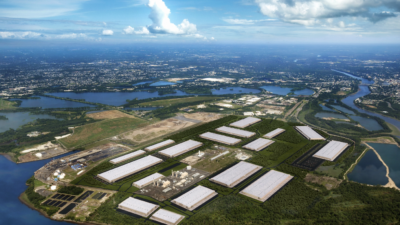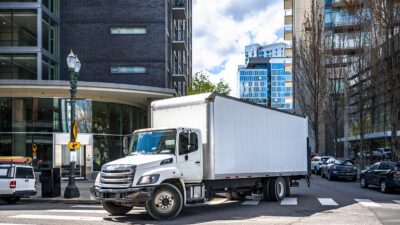The rapid rollout of COVID-19 vaccines in the U.S. allowed for a swift reopening in many parts of the country. Economic growth in the first three months of the year was positive, providing optimism for further economic expansion. The U.S. industrial sector has operated full steam ahead throughout 2020, and that momentum carried over into 2021. Overall net absorption totaled 109.6 million square feet in Q1 2021 – a record for the market and 83% higher than the same period a year ago. E-commerce growth continues to be a driving factor for industrial demand as the industry accounted for 14% of all retail sales in 2020, a 3.4% increase over 2019. In fact, the number of global e-commerce users is expected to increase by 400 million in the coming year. According to a recent report by Adobe’s e-commerce division, the COVID-19 pandemic boosted U.S. online shopping by $183 billion beginning in March of 2020. E-commerce is expected to reach $1 trillion by 2022. This means that e-commerce occupiers, like Amazon, will continue to require additional space to meet the demand of consumers shopping from the comfort of their homes.

First quarter new supply fell 16% year-over-year, but deliveries are expected to pick up by year-end with a full pipeline. A total of 73.2 million square feet was built during the first three months of the year, and the market is poised to experience another record year in 2021. Of the 12 buildings greater than 1 million square feet built during the first quarter, just one of those buildings was fully vacant at the end of the quarter – a 1.3 million square foot facility in South Carolina. Almost 356 million square feet remains under development, 8% more than what was under construction at the beginning of 2020 and 4% higher than the previous quarter. The Dallas-Fort Worth industrial market continues to execute the most construction, as evidenced by the 7.6 million square feet delivered and the 28.9 million square feet under construction.

Twenty-six markets posted occupancy gains greater than 1 million square feet during the first quarter, including Atlanta, Dallas, Inland Empire, Chicago and Phoenix. On the other hand, just five industrial markets posted negative absorption – Milwaukee, Huntsville and Norfolk among them. The markets experiencing the most activity growth (absorption as a percent of inventory) include emerging markets such as Salt Lake City, Stockton, Columbus and Savannah. Demand for logistics and distribution space, primarily fueled by e-commerce occupiers, supports the strong growth seen in these cities.

These robust industrial fundamentals at the beginning of 2021 point to further expansion expected for the sector. E-commerce and overall retail growth will continue to fuel the need for industrial space for the foreseeable future. Land scarcity remains an issue, however, especially in core markets. The reduced land supply has created new interest in infill development opportunities, although rising costs for materials could limit development in those core markets. Despite these potential challenges, the industrial market will remain the darling of commercial real estate and continue to post records across the country.

 U.S. National Research
U.S. National Research
 Michael Golarz
Michael Golarz Tom Golarz
Tom Golarz
 Craig Hurvitz
Craig Hurvitz
 Lauren Pace
Lauren Pace Ronna Larsen
Ronna Larsen